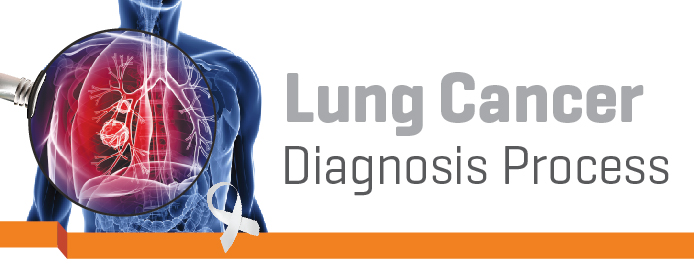What tests would your doctor do for you? 1) Chest X Ray: it is picture of the lungs taken by the radiologist 2) Chest CT scan; it is a more detailed picture of the lungs showing the structures in the chest more clearly  3) Blood tests like full blood count, liver function tests and tests to detect low calcium and low sodium levels 4) Fibreoptic bronchoscopy: a flexible tube is put into the air passages and lungs to look for tumours and to do a biopsy, if needed 5) Needle biopsy from the suspected area of the lung: a needle is inserted through the chest wall into the lung to obtain biopsy tissue 6) Cytology: sputum will be tested for cancer cells 7) Positron emission tomography (PET)-CT scan/ 18F-deoxyclycose PET scan: a type of scan to look for suspected cancer 8) Radionuclide bone scan: bones are scanned to look for cancer 9) Lung function tests: to see whether functioning of the lungs is affected. Is it important to consult your doctor immediately? Yes. Early detection of lung cancer is the key to improving survival. Immediate measures can be taken to improve the chance of recovery and it may also be treated more successfully.
3) Blood tests like full blood count, liver function tests and tests to detect low calcium and low sodium levels 4) Fibreoptic bronchoscopy: a flexible tube is put into the air passages and lungs to look for tumours and to do a biopsy, if needed 5) Needle biopsy from the suspected area of the lung: a needle is inserted through the chest wall into the lung to obtain biopsy tissue 6) Cytology: sputum will be tested for cancer cells 7) Positron emission tomography (PET)-CT scan/ 18F-deoxyclycose PET scan: a type of scan to look for suspected cancer 8) Radionuclide bone scan: bones are scanned to look for cancer 9) Lung function tests: to see whether functioning of the lungs is affected. Is it important to consult your doctor immediately? Yes. Early detection of lung cancer is the key to improving survival. Immediate measures can be taken to improve the chance of recovery and it may also be treated more successfully.  Prepared by A/PROF RUMI KHAJOTIA Helped by IMU students: CHEING WEI JIANN, GERALDINE LEE YUE HUI , LEE CHEE HUI, TAN YVONNE A/Prof Rumi Khajotia MBBS (Bom), MD (Bom), MD (Vienna), FAMA (Vienna), FAMS (Vienna) Associate Professor in Pulmonary and Internal Medicine, International Medical University, Malaysia Consultant Pulmonologist, Hospital Tuanku Ja’afar, Seremban, Malaysia A/Prof Rumi Khajotia is a Consultant Pulmonologist. His fields of interest include COPD, Bronchial Asthma and Lung Cancer. He has published a number of research articles and case studies in peer-reviewed international medical journals, on these subjects.
Prepared by A/PROF RUMI KHAJOTIA Helped by IMU students: CHEING WEI JIANN, GERALDINE LEE YUE HUI , LEE CHEE HUI, TAN YVONNE A/Prof Rumi Khajotia MBBS (Bom), MD (Bom), MD (Vienna), FAMA (Vienna), FAMS (Vienna) Associate Professor in Pulmonary and Internal Medicine, International Medical University, Malaysia Consultant Pulmonologist, Hospital Tuanku Ja’afar, Seremban, Malaysia A/Prof Rumi Khajotia is a Consultant Pulmonologist. His fields of interest include COPD, Bronchial Asthma and Lung Cancer. He has published a number of research articles and case studies in peer-reviewed international medical journals, on these subjects.









